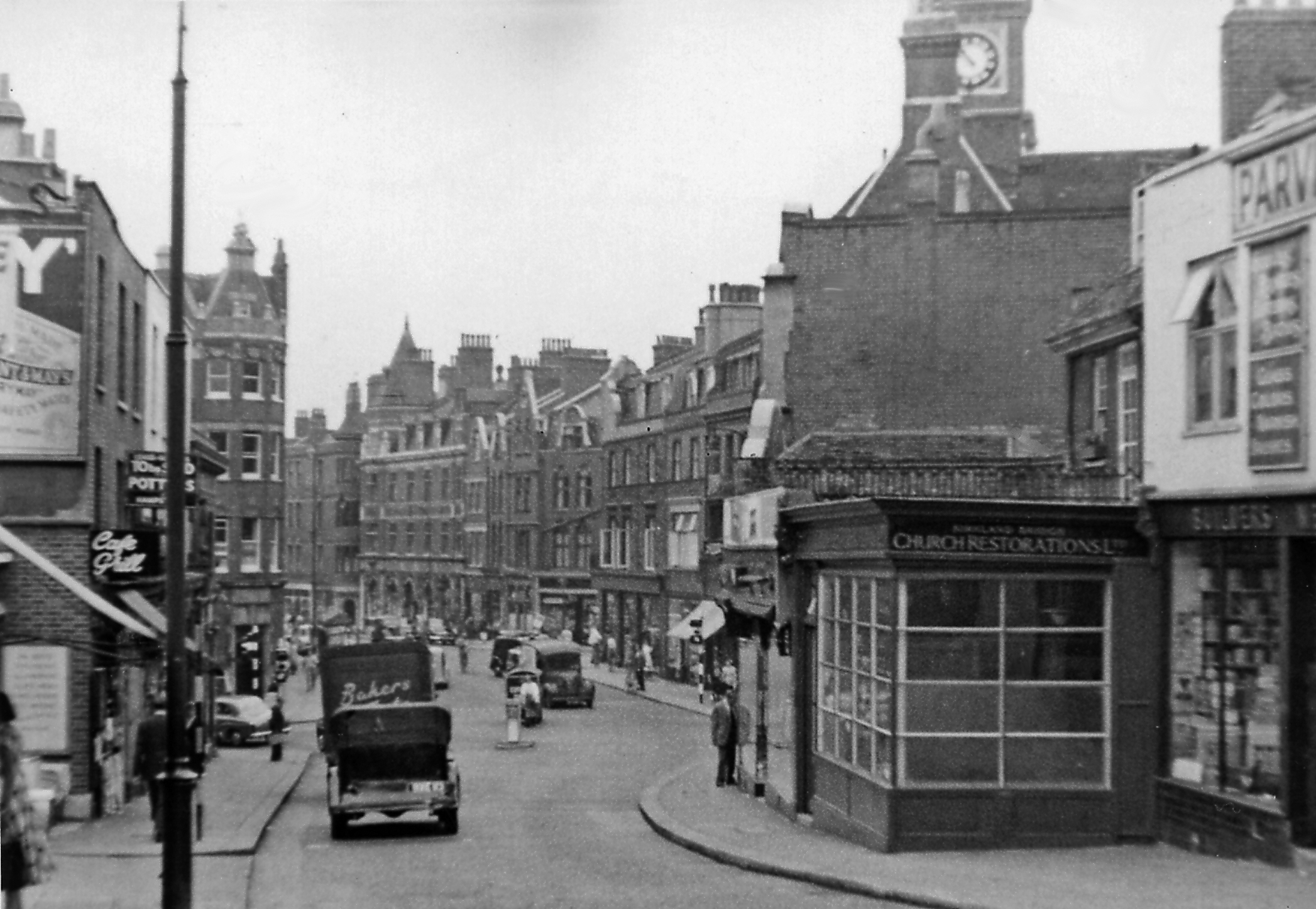Hampstead is on a steep hill and the tube station platforms are the deepest on the London Underground network, at 58.5 metres below ground level. It has the deepest lift shaft on the Underground.
Although early records of Hampstead itself can be found in a grant by King Ethelred the Unready to the monastery of St. Peter’s at Westminster (AD 986) and it is referred to in the Domesday Book (1086), the history of Hampstead is generally traced back to the 17th century. Trustees of the Well started advertising the medicinal qualities of the chalybeate waters (water impregnated with iron) in 1700. Although Hampstead Wells was initially successful, its popularity declined in the 1800s due to competition with other London spas. The spa was demolished in 1882, although a water fountain was left behind.
Hampstead started to expand following the opening of the North London Railway in the 1860s (now part of the London Overground), and expanded further after the tube station opened.
Designed by architect Leslie Green, Hampstead station was opened on 22 June 1907 on the site of the old Hampstead Post Office. Located at the junction of Heath Street and Hampstead High Street, the name Heath Street was proposed for the station before opening: indeed, the original tiled station signs on the platform walls still read Heath Street. Hampstead is on a steep hill and the station platforms are the deepest on the London Underground network, at 58.5 metres (192 ft) below ground level. It has the deepest lift shaft on the Underground at 55 metres (180 ft) which houses high-speed lifts. There is also a spiral emergency staircase of over 320 steps.
This part of the Northern Line, to be later known as the Edgware branch, was originally called the “Hampstead Tube” (formally the “Charing Cross, Euston & Hampstead RailwayC), as a line from Camden Town was extended to a terminus at Golders Green.
The tunnel between Hampstead and Golders Green is the longest between two Underground stations with Golders Green being chosen as the terminus because the line finally reached the open air there and a depot could be built.
CITATIONS:
The Hampstead material on The Underground Map has some of the most varied sources on the project since so many authors chose to write about it.
First mention should go to Gillian Bebbington and her London street name histories.


